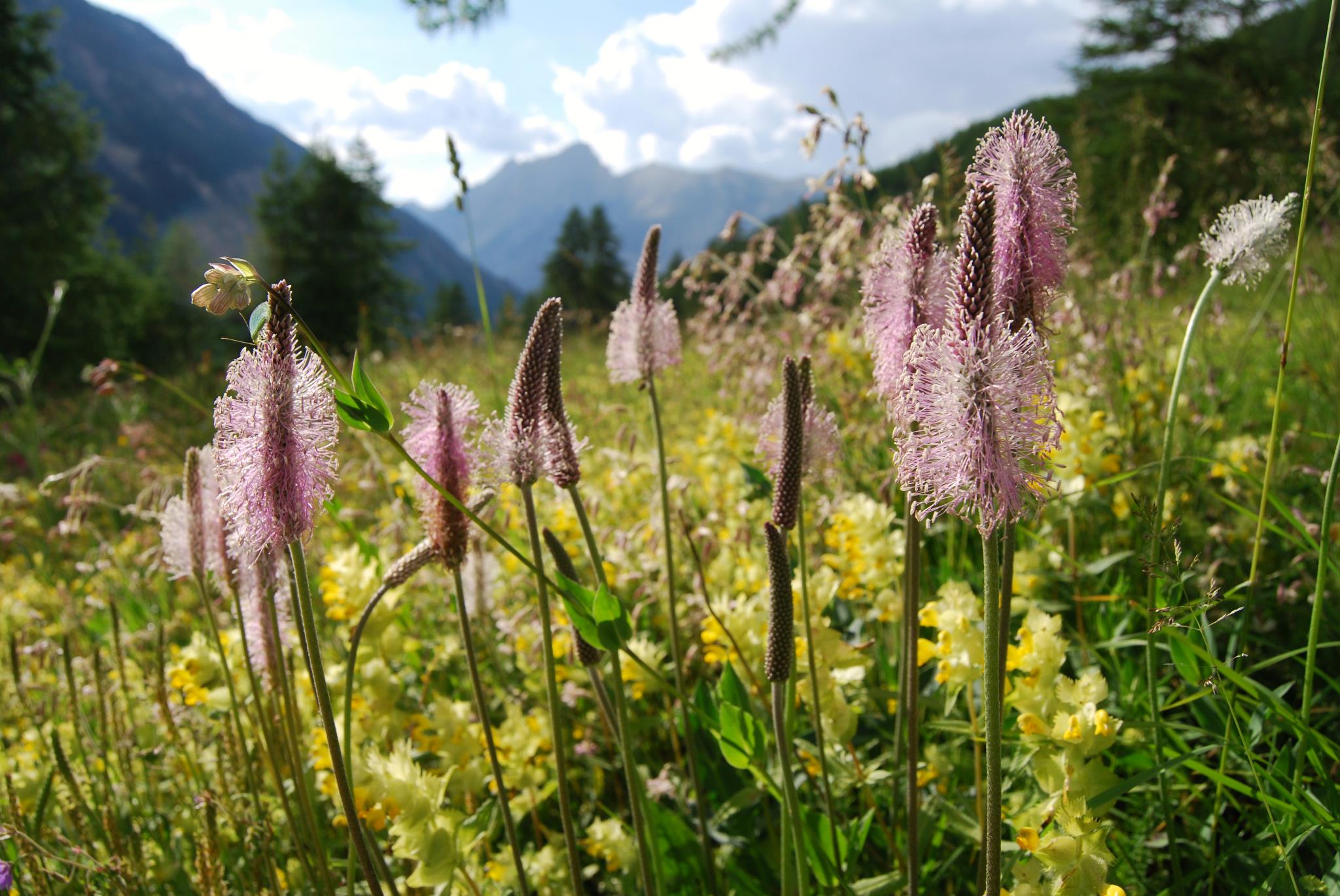
Beautiful plantain in Alpenweide
It is widely known to use freshly picked plantain leaf as an emergency patch directly on a wound or to relieve itching and swelling in the event of insect stings.
Traditionally, plantain preparations are used in spring courses to cleanse the blood, but especially in catarrhal respiratory problems and skin diseases. It is right that people are increasingly aware, because scientific research shows more and more pharmacological effects and discovers 'medicinal substances'.
For example, the antibacterial, anti-inflammatory effect of Plantago lanceolata is mainly attributed to iridoid glycosides, the main component of which is aucubine (its activity decreases when heated). The softening effect on the cough stimulus is mainly associated with the high content of mucous polysaccharides. Among other important ingredients of Plantago lanceolata are: flavonoids (especially apigenin and luteolin), phenylethanoids (acteoside), tannins, coumarin glycosides (aesculetin), chlorogenic acid, enzymes (invertase), quite a lot of silicic acid and a high content of potassium.
The European Medicines Agency (EMA) concluded in an assessment report that there is sufficient evidence for the (oral and oromucosal) application of extracts of Plantago lanceolata in the 'symptomatic treatment of irritated mouth and throat mucosa accompanied by dry cough'. And that's what we need right now.
https://wetenschap.infonu.nl/scheikunde/46881-weegbree-wetenschappelijk-bekeken.html
https://kunst-en-cultuur.infonu.nl/geschiedenis/53481-weegbree-geschiedenis-en-mythisch-gebruik.html
#weegbree #kruiden #geneeskruiden #plantago #luchtwegen
- Comments (0)
- Recommended
- Milestones


Here are your recommended items...
Here are your milestones...





